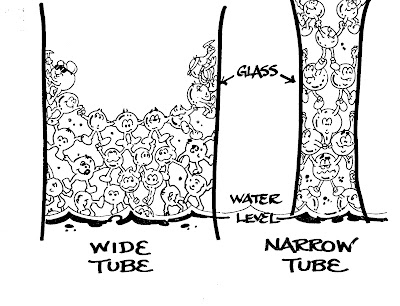The United Nations has declared 2013 to be the ‘International Year of Quinoa’ and so it’s
appropriate that I post a blog about this wonderful food on the advent of the
new year. Truth be told quinoa [pronounced Keenwah] has
been experiencing worldwide commercial success for almost 15 years now, though
there still are many who have yet to discover its remarkable versatility and incredible
nutritional benefits.
The quinoa plant was originally
discovered in the Andes mountains in the of north-western part of South America
- Ecuador, Bolivia, Columbia and Peru - as far back as 7,000
years ago but it was not domesticated until about 4,000 years ago when its
cultivation spread and it became a staple in the native diet. It had to be an
extremely hardy plant to adapt and thrive in the poor soil of its harsh environment, with its frequent draughts and early frosts. Optimal growing temperatures range from -3oC [25oF] to 35oC
[95oF] so they can actually be grown in your own back
yard as shown when you click on the video.
The grains you see in the bowl above are actually the
seeds of the plant and, as shown on the right, multicoloured quinoa plants can produce black and brown seeds as well. When the plant’s ready to harvest, its seeds can just
be shaken into a container . However there is one
problem - to protect the seeds from fungi or being eaten by birds, they
are covered with bitter tasting saponins that need to be thoroughly washed off with running water. The packaged seeds you buy probably have been washed but it's still wise to test them to be sure all the saponins that cause foaming, have been
removed.
To cook quinoa, you use 2 parts water to1 part seeds,
bring to a boil and let simmer for 15 minutes.
The result is a nutty flavoured product that can be used instead of potatoes
or rice [or combined with rice], mixed in salads or as a base for many
recipes. Quinoa
has become a real success in the health food and organic food market because it
is rich in proteins, essential minerals, vitamins, good lipids and
antioxidants. It is also gluten free and has a good
balance of amino acids.
In every cell of
our body, the DNA in the nucleus carries
instructions for the cell to build proteins. Proteins are long strings of amino acids strung together as shown on the right and they are actually what make our body chemistry work. There are twenty kinds of amino
acids altogether - nine of which our bodies can’t produce enough of for our
needs. Those could be called the ‘essential’ amino acids and they are all
present in quinoa – a real bonus for those who are vegetarians and vegans because quinoa is
12 to 18 percent protein.
I like to start my day with quinoa in my cooked cereal for breakfast. I use
half quinoa with half oatmeal [or cream of wheat] and I feel well nourished to
be ingesting the quinoa protein since it digests slowly and thus sustains me
until lunch. Incomplete proteins are found in beans, peas, nuts and most grains
but quinoa, along with soy, is one of only a few complete plant proteins.
Best wishes for a Happy Healthy New Year with quinoa. Rie
















